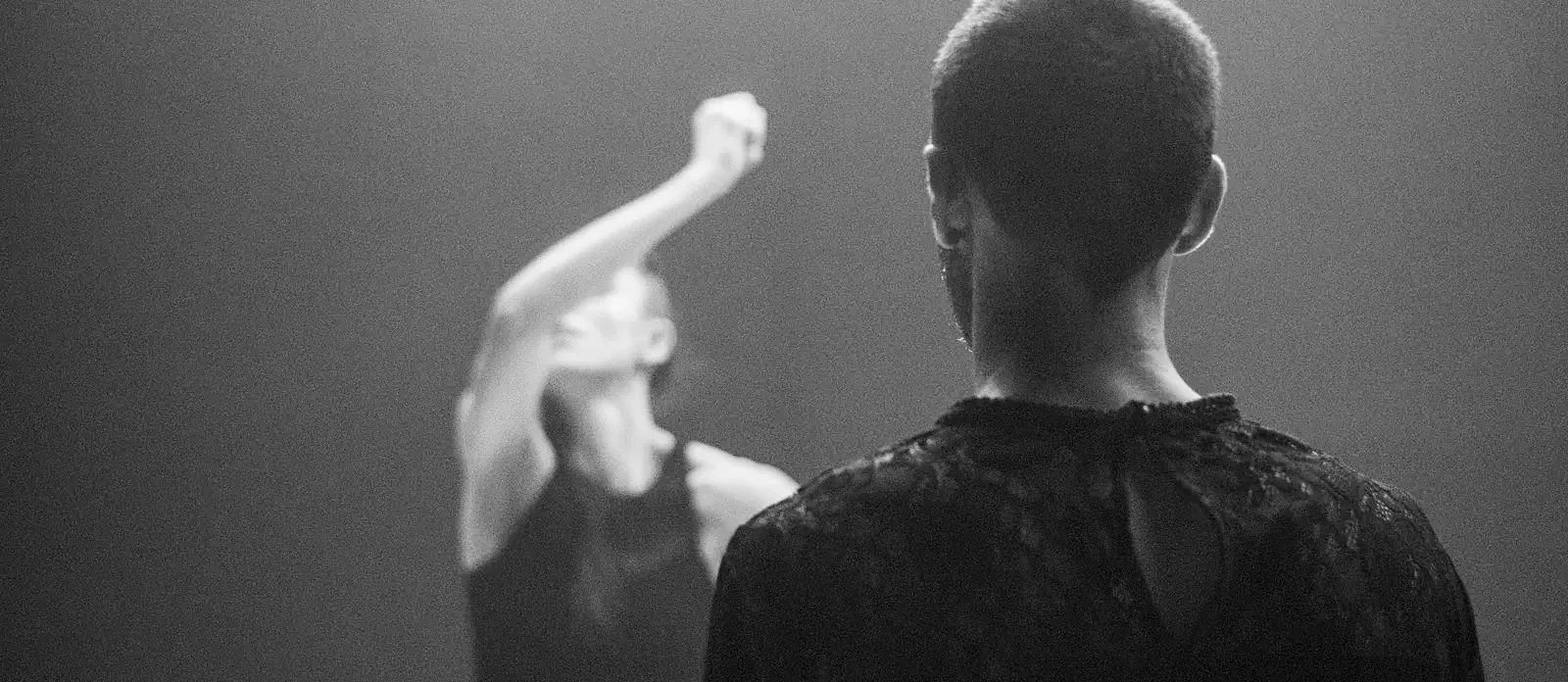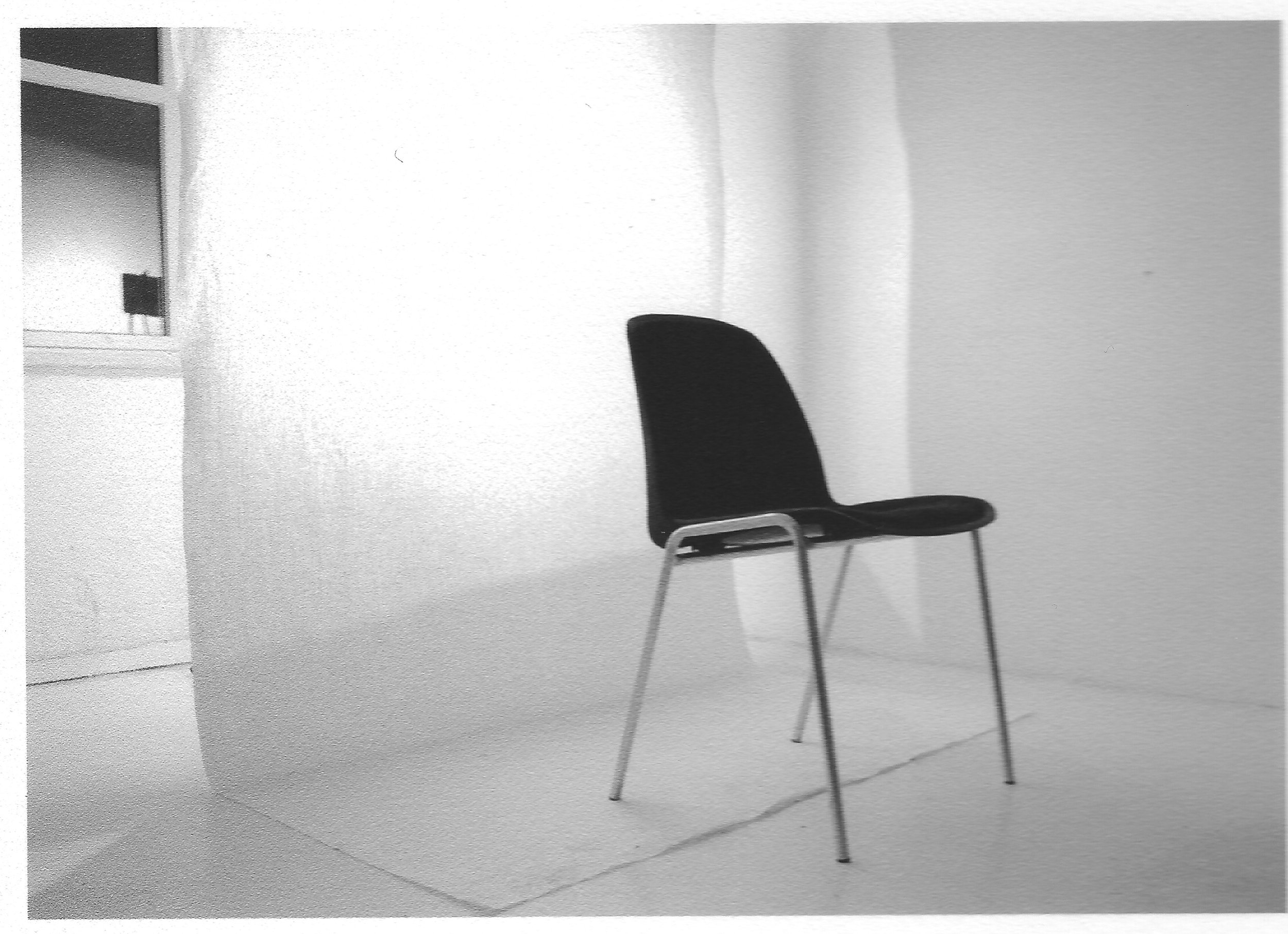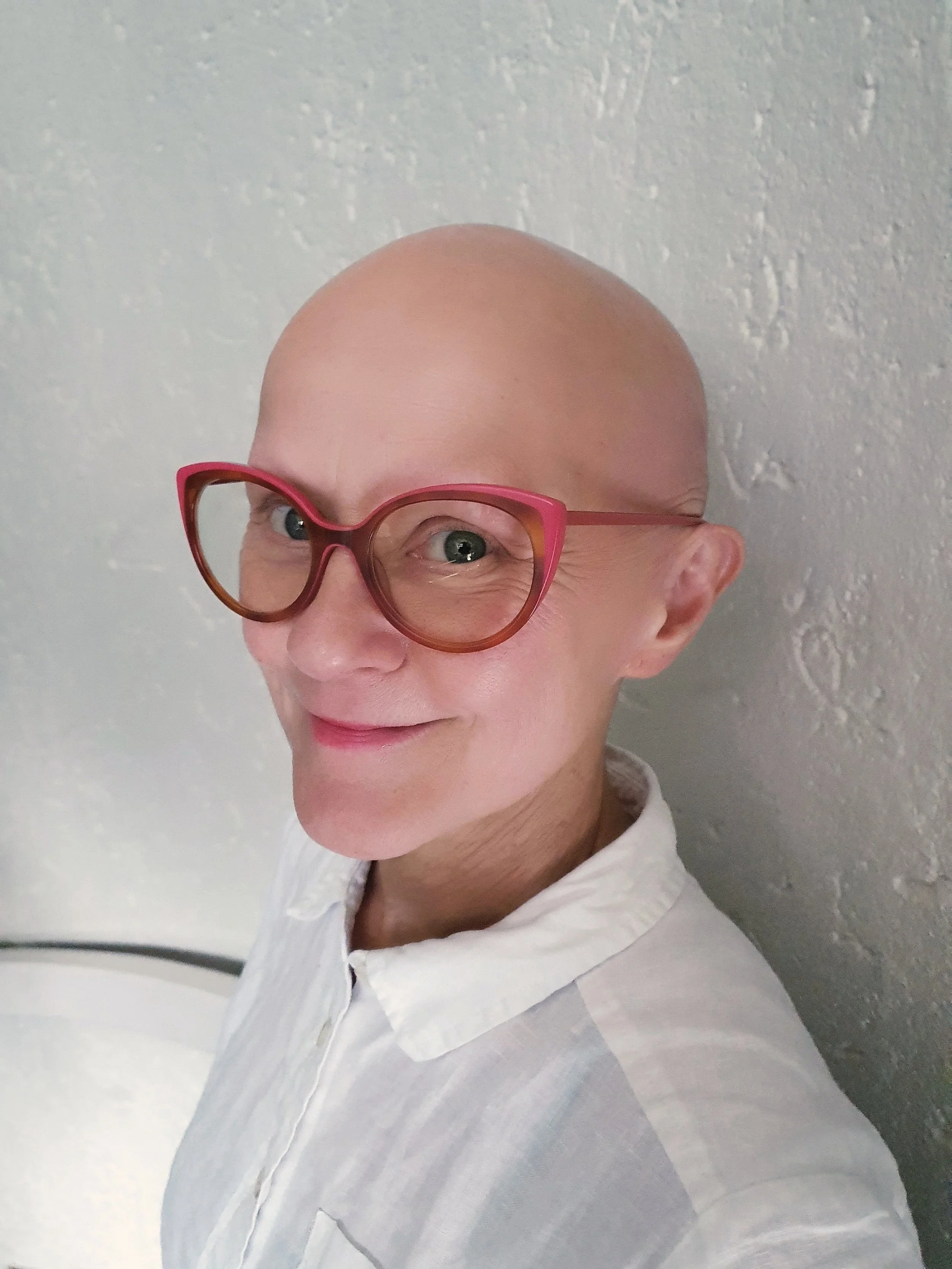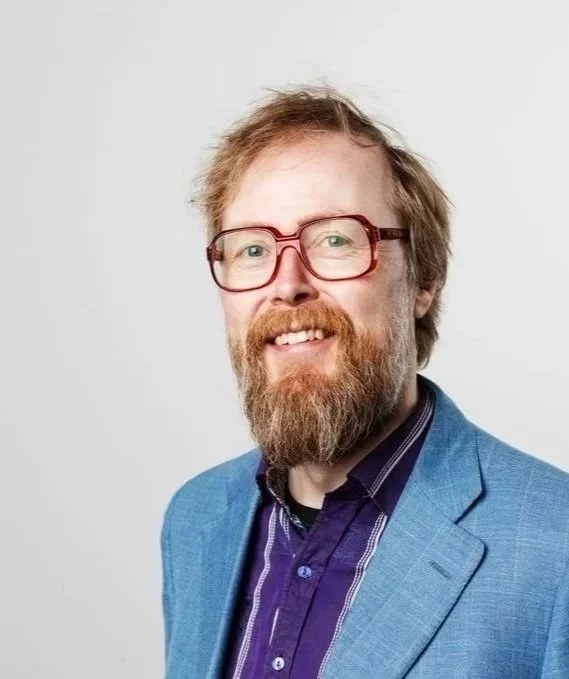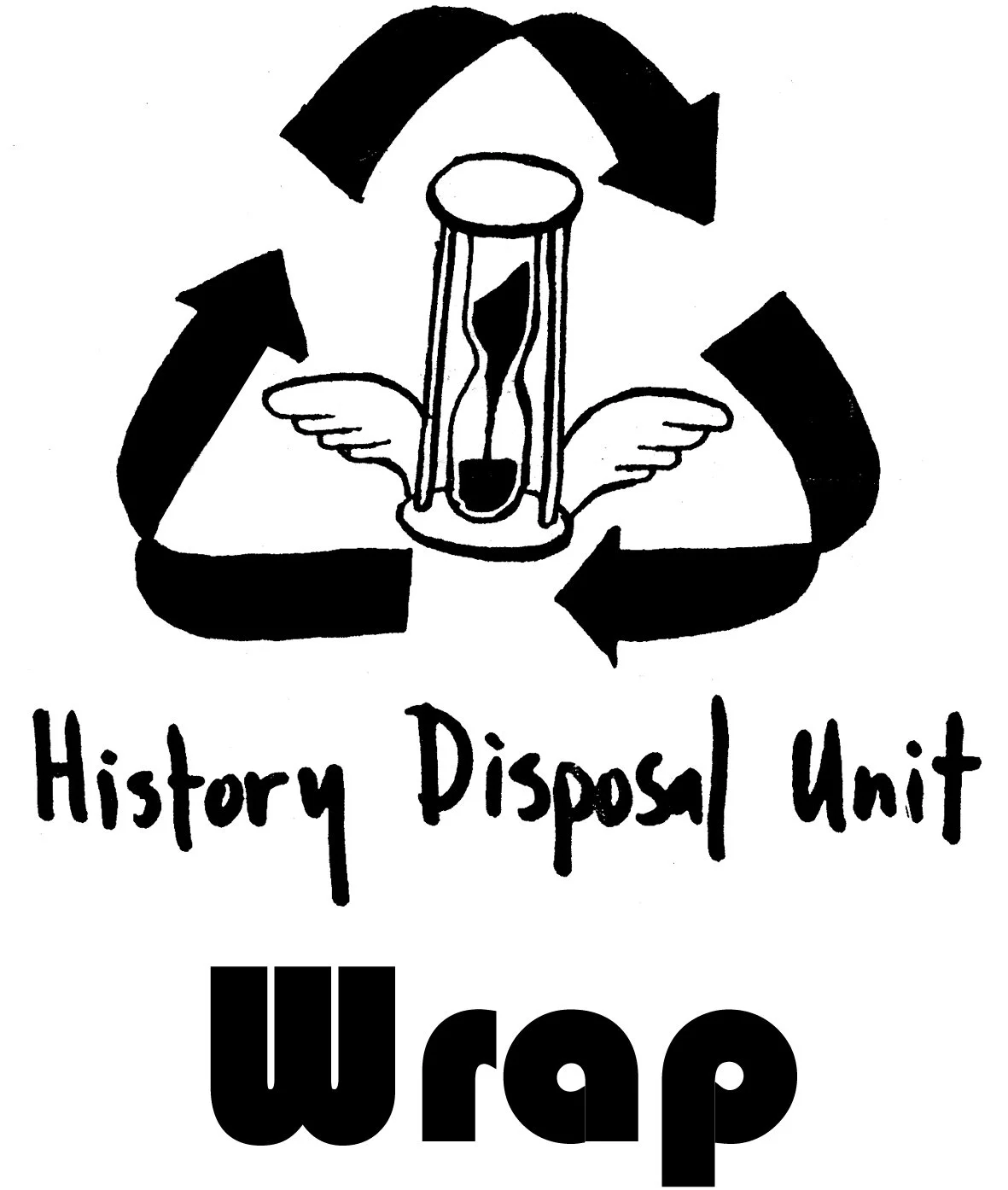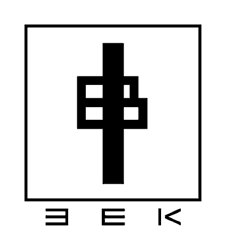Neither Nor productions is run by Alwynne Pritchard and Thorolf Thuestad
Join us for our 10th Anniversary Celebration performance and party at Gyldenpris Kunsthall, Bergen!
On December the 6th, Alwynne Pritchard and Thorolf Thuestad will present their new show Lapsing, exploring the murky, complex, and often absurd contrasts between human aspiration and the brittle, gooey reality of everyday life.
A performance for voice, electronics, cello and moving scenographic elements, “Lapsing” contrasts the prosaic, tricky and sometimes funky negotiations of everyday life in Ytre Arna with the timeless, heroic sweep of the mountains and dark waters of the fjord beyond.
Doors open: 18:00
Performance: 18:30 - 19:30
Tickets HERE: We use a pay-what-you-can system, and there’s also a free ticket option available. Please choose the ticket that best fits your situation and join us — but make sure to reserve one ticket per person, as we have limited capacity.
-
Ten years is a long time, and when a small institution has survived for that long, it is a cause for celebration. Ten years is the age of music theatre company Neither Nor, which should merit a few comments, some memories maybe, some perspectives on their artistic output and practice, and, obviously, congratulations. However, I have known Thorolf and Alwynne, who are more or less identical to Neither Nor, for more than twenty years, as part of their audience, part of their artistic community, sometime collaborator, and friend – and, truth to be told, it is a bit difficult for me to remember exactly which of their remarkably diverse activities that sort under the name Neither Nor, and which goes under their own, or even completely different, names. There have been so many events, some of them even before the emergence of Neither Nor, so many impressions that add up and blend together into one hazy fog. So where to begin?
With a detail, perhaps, a little glitch. I remember a text, possibly written in conjunction with Thorolf’s PhD project Emotional Machines, almost certainly related to a discussion about art and representation that we were having at the time, where a typo appeared. The phrase in question was suspension of belief. Surely, what was intended must have been quite the opposite, the (in this context) more familiar expression, suspension of disbelief? You know, the situation where we, the audience, see something happen on stage, for instance someone dying, and we believe and feel that the person is dying even though we know very well that it is just some actor pretending to die. Or the machines of Emotional Machines, that seem so lifelike. I feel they have intentions, but know they do not have it. In order for the work to have an effect on us, we must ignore what we know and believe what we know is wrong, the realness of the world represented in the work. Our natural disbelief in its existence must be set aside. On the other hand, what would it mean, in this context, if belief was in fact the correct word? There is a certain (slightly obscure, I think) philosophical practice that promotes the temporary suspension of beliefs and judgments, in order to achieve a more detached, birds-eye view of the questions at hand. So there is a possible, although slightly far-fetched, interpretation, where suspension of belief points to a certain way of looking, similar to the disinterested attitude we have towards a work of art. After all, we are not shocked when we see someone dying on stage since we know that it is not really happening. Then we have two opposing expressions that kind of mean the same thing, or vaguely overlap, at least in one particular interpretation.
I can’t remember how the issue was resolved – if it was resolved at all – but I do remember discussing it in one of the countless conversations I have had with Thorolf and Alwynne. Ten years is a long time for someone whose memory is getting less accurate every day, while the amount of stuff to be remembered is constantly growing. Such is life, such is getting old. Things that made a huge impression when they occurred have faded into blurry fragments, indistinguishable from trivial, even imagined or fictional events. There is a connection here. You see, music and theatre, the stuff that Neither Nor have specialised in, have a thing in common: they are ephemeral. A performance has its time, then it disappears. It doesn’t persist. Its only chance to make its mark is in that precious moment when it meets an audience. As such it is inscribed in other events, in other time spans. The performance inserts itself in peoples’ lives, becomes part of the flow of experiences that defines who they are. As time goes by, the original event may be more or less forgotten, but it will still be part of their history, even if it is an unconscious part. The act of remembering, understanding, analysing, and coming to terms with the event, is a different kind of experience, belonging to a different time. Which is where we are now, at the company’s anniversary. It is the time of hindsight.
Exactly why the dis/belief issue came to mind is not entirely clear to me. It might have something to do with the fact that Neither Nor often operate in a vague terrain where common representations don’t behave as expected. This one example, where the obvious opposition between belief and disbelief turns out to be not so clear after all, is of a particular kind that thrills my imagination, but there are others. I remember the performance Underground from 2019, a collaboration with the French company Scènes Théâtre Cinéma, where the audience was split in two. One half would watch a film in one room, the other would be in another room where the film was being made in real time. In the interval, we would swap, and the whole performance was repeated. The film presented a Kafkaesque narrative about a hapless protagonist trying to make sense of his own story, walking though corridors and strange office spaces, climbing ventilation shafts and other obstacles in his quest for someone – a doctor – who would be able to reveal why he was sent out on this quest in the first place. In the other room we would see the making of this narrative, that is, the revelation that it was in fact all visual trickery and ruses, a complex machinery of cameras, technicians and stagehands, backdrops and props, people going in and out of character, performing (at times) mysterious tasks. It shows the reality behind the fiction. To stick with our terminology, the second room (which half of the audience would experience before, the other half after viewing the film) reintroduces disbelief. We no longer trust what we see, and the narrative falls apart. But of course, this second room is also a stage, just as artificial as the film. It provides no more answers for us than the elusive doctor does for the protagonist. In fact, these two layers of meaning (or “narratives”) co-exist, folded onto each other, and follow the same trajectory. They both belong in the twilight zone between the shared world of actors and audience, and the fictitious world we are peeping into.
The name of the company captures this rather well, I think. Neither Nor, a sign of rejection and negation for sure, but also ambiguity. Neither this nor that. Not quite music, not quite theatre? The name insists on the non-specific, as if the company wants to retain the freedom to do whatever comes along. It is indeed difficult to pinpoint exactly who this company is. They are two people, obviously, but the actual performances involve any number from a single performer to... well, a lot. And since each of the two are several, there is already quite a crowd. Composer, singer, technician, sound designer, performer, writer, curator, producer, programmer, sculptor, actor – the various roles pile up into a dizzying multiplicity. Not to mention the people they tend to involve in their productions, who have very diverse backgrounds and styles, and importantly are allowed to bring their idiosyncrasies into the projects. This can be explicitly stated, as in For one – for many – for all, where the three performers – Alwynne, Jostein Gundersen and Caroline Eckly – inhabit the space in very different manners – but form a unity against the non-human performers, who are surreptitiously controlled by Thorolf. Or it can be implicit, as in DOG/GOD, where the presence of others – the composers of the miniatures performed – is manifested through Alwynne’s equally idiosyncratic performance. If we want to understand what Neither Nor the company is really about, I have a feeling that the answer must have something to do with people. To engage with people, communicate, challenge and involve, create meeting points, exchange ideas… Neither Nor is not just the artistic output of two people, it is an open space where things are allowed to develop according to their own logic.
Here is another thing that music and theatre have in common: they bring people together. What is a performance, after all, if not the meeting between the performer and the audience? Music and theatre are rarely the work of a single artist, more often than not they involve assemblages of people, and these can be complex or simple, collaborative or hierarchical. Neither Nor seem to be constantly experimenting with ways of doing this, both in scale and type, and the ever changing group of people involved in their projects bear witness to that. Maybe it is not even experimental, just an effortless way of coming together, finding the roles and activities that fit. Of that, I think Slettafest, the almost-annual one day festival taking place in Alwynne and Thorolf’s garden in Ytre Arna, is the most precise (and certainly the most charming) expression. To ensure good weather, it is planned just a day in advance, resulting in a somewhat ramshackle lineup of friends and colleagues who happen to be in the area. So there we are, gathered together on their rather steep lawn, seeing one concert after the other, in so many genres. Some perform, some are volunteers, some plain audience, and quite a few inhabit more than one of these roles. Some will stay all day while others just pop in for a few minutes or catch a glimpse from the bus stop nearby. Friends and colleagues, neighbours and strangers – everyone joined together in this brief celebration of music, community and friendship, and the melding of art and life.
-
It was in September of 2012, an impromptu Sunday stroll through a Portuguese village. An encounter while moving forward under the sun. This encounter was to accompany me for more than 13 years now. Alwynne Pritchard, then her companion Thorolf Thuestad, together going under the name of Neither Nor. And so, for me, it’s neither without one, nor without the other. Thorolf was not present for every show, and yet I cannot dissociate them. Therefore it is indeed ‘Neither Nor’ of whom I speak.
Surprisingly we are quite different from each other artistically. We operate within spheres, within asymmetrical aesthetics. A kind of mutual respect, silent and implicit, has imposed itself upon us. In twelve years we have done six shows: Bull’s Eye (2013), Hamlet-Machine (2016), Underground (2019), Paysage sous surveillance (2021), La fin de l’humanité (2023) and finally Issue Commune in 2024. Additional projects and ideas remain safely tucked away in drawers.
Is this a story, an experience? At what point does the thing become relatable? It is neither a Christmas Tale, nor the account of a polar expedition, but simply the story of artistic paths that crossed one day and continued, at irregular intervals, to work together. The adventure took place, is taking place and, I hope, will take place again.
Take a step back and describe what happened. Bear witness.
The first two projects we initiated and staged were sorts of propositions: One (Bull’s Eye) formulated by the European association Tryangle, and the other (Hamlet-Machine), an invitation from Gwenaël Morin to occupy the Théâtre du Point du Jour in Lyon for three months.
Bull’s Eye was an important moment of mutual discovery, for we did not really know each other at all. Only fifteen days spent together, Alwynne and I, at a Tryangle workshop in Montemor-o-Novo.
Alwynne found herself in the middle of the show wearing several hats. Singer: this, she knew how to do. Video artist: she created documentary vignettes that were subsequently included in the show. And finally, actor: that, she had never really done before and I always had the impression that for her, it was a revelation. Droll, impeccable rhythm, attentiveness to her acting partners, a jitteriness with a delightful raspy voice.
In the middle of this unlikely cast, composed of two Portuguese (actor and author), a Finnish dancer, a German musician and two French people, Bull’s Eye was a show that initiated our collaboration. Alwynne had in her luggage her companion, Thorolf, known as Thor, whom she had told us about but whom we did not know. And when the invitation from Gwenaël Morin came three years later, the idea of continuing with Neither Nor immediately came to mind. The creation of Hamlet-Machine that followed was the founding moment of our collaboration.
For me, Hamlet-Machine, by German author Heiner Müller, was a text I was staging for the third time, a recurring theme that has shaped my artistic journey for more than thirty years. As performer and co-director with David Mambouch, this creation was a battle, a prolific struggle between music (sound) and the rhythm of the performance, attacking a monumental text, (its decor representing the monument).The action, the staging, described the construction of a wall to resist a wave, a tsunami soon to wash over the stage. Müller’s text emerged only after the construction, forty minutes from the beginning, as a result, a response. the building of this barricade, this barrier, this dam, was a prerequisite for Müller’s text.
The sound creation of Alwynne and Thor was fractal, fractured, passing from fragments of the composer André Popp to the sounds of musique concrète, industrial music, a maelstrom of sonic landscapes amplifying gradually to the point of explosion.
As sole interpreter of the text, it was a pleasure to feel oneself transported by sound, by this sonic world creating very different colours and spaces, and which, as a result, gave the text entirely new meanings. But like a wave on which one can be carried, you have to also swim against the current so as not to be swallowed up. At certain moments I rediscovered the text: its sonorities, its interconnections, its meanings, its rhythm.
Shortly thereafter we decided to continue by undertaking a large-scale project of live cinema: Underground. A show requiring two spaces: one for filming live, the other for projection. Both being performed twice simultaneously, before two halves of the audience.
Over a period of two years, several working residencies took place as a prerequisite for this creation: Portugal, Italy, Norway, and France. Inspired by Kafka, we set to work together for the first time on the completely collaborative writing process of a show. A French-Norwegian co-production. Two months of rehearsals with two teams, One Norwegian, one French. The attempt at a ‘total spectacle’, bringing together filmmakers, actors, musicians, sound effects artists, technicians, comprising an ensemble of more than thirty people. One could say that the Covid situation six months later did not help to realise the tour of this production, which ran for only eight performances in France, then in Norway.
Followed by, in 2021, a short remote form due to Covid: Paysage sous surveillance. Then La fin de l’humanité in 2023 and finally, in 2024 and 2025, the sound design for Issue Commune, an outdoor performance for a festival in the heart of the Bourbonnais countryside.
We are now in 2025, in an upside down world, which seems more hostile and precarious to us every day. Its delicate balance, between Putin, Gaza, the rise of nationalism, seems to waver a little more with each passing moment. Everyone knows it, everyone feels it: we will have to invent new ways of continuing on. But before being ‘professionals’, Alwynne and Thor are, above all else, artists. And we have made the bet that it’s the artists, or at least art, that will save the world. Let’s hope that we’ve got that one right!
Strangely, despite our differences, we have created side by side, without clash, without unnecessary chatter, without criticism, and in a light-heartedly way. I see in it a mutual listening, attentive and precise, like that of improvisers, a true collaboration. And as they often tell me about my work: “It is so French!”. To which I gladly respond to their own: ’”It’s so Nordic!”.
Translated by Robert Lipman
And a heads-up for 2026!
SPELL
"There are many stories, and the universe lives them all."
- Stephen Hawking.
At the heart of this project is a desire to research how our bodies store coded, storied information, be it in our brains, muscles, or how we move or interact—and how this information can be explored and developed through physical and vocal practices. How do we deal with the liminal or imperceptible structures that define how we experience the world? What role does the body play in confronting the unknown? What do we do in order to be able to classify things, to make them tangible—to translate them from a world of abstract ideas into a material one?
The stories we tell one another are a way of making the world tangible and known to us. They are acts of creation—the sealing of a social contract that defines how we live together now and in the future. They are a way of dealing with the impossibility of the universe.
So what does the body do with these stories?
Stories and histories settle in our genes and in regions of our brains – collective traumas and ‘old knowledge’ are genetically anchored and physically present in our brain cells. The body not only carries information within it, it also releases it. Communicates it.
In ritual acts—spiritual and religious—but also in the scientific-psychological field, we seek access to the subconscious, through physical practices such as singing, dancing, speaking and breathing. Culturally, there are many significant differences in how we create, tell and retell our histories, but storytelling itself is universal. We describe our institutions to understand them and give them a body. Because only what has a body, what can be described, can have a story and exist.
SPELL will be presented at Cornerteateret, Bergen, on February 13, 14 and 15, 2026. Watch this space for more information!
With:
Julia Maria Koch (choreography, direction); Alwynne Pritchard (direction, music/sound, performance); Erik Iñaki Odriozola Soraluce (dance/performance); Alberto Chianello (dance/performance); Nadine Nasr (dance/performance); Eslam Saad (text, performance); Thorolf Thuestad (music/sound); Torsten Lippstock (lights).
Photos: Matthias Müller and Alwynne Pritchard.
SPELL is supported with funds from Arts Council Norway, Fond for Lyd og Bilde, Goethe-Institut and Bergen Internasjonale Teater.
After the performance, the party will begin! Everyone welcome.
Lapsing is supported with funds from Arts Council Norway, Bergen kommune and Uniarts Helsinki.
INSCRIPTION
Inscription is a hybrid composition for kinetic sculptures and human performer.
Thorolf currently has a 2-year post doctoral research post at Uniarts Helsinki, during which he is exploring how kinetic sculptures can embody human-like movements, while preserving their own distinct otherness. For this project, Alwynne joins the kinetic figures to create a hybrid human-sculpture.
Inscription is supported by Uniarts Helsinki utilising equipment from MAGICS, The Norwegian Arts Council, The Norwegian Composers Fund, Bergen Municipality, Fond for Lyd og Bilde and NOTAM. It will be presented in the Autumn 2026.
PEOPLE
-
works with vocal and physical performance, sound, video and text. She studied composition at the Royal Academy of Music in London and has a PhD from the University of Bristol. She has composed for, and performed with, leading musicians and ensembles across the globe, and her electro-acoustic composition Decoy, created at the Experimentalstudio des SWR in Freiburg for the Donaueschingen Musiktage, received the special prize given by the Foundation Ton Bruynèl, STEIM and the Foundation GAUDEAMUS.
At the time of writing, Alwynne has commissioned more than twenty-five pieces for her ongoing solo project, DOG/GOD.
Over the last decide, Alwynne has collaborated frequently as an actor and vocalist (as well as composer) with the French company Scènes Théâtre Cinéma, and her music-theatre pieces Hospice Lazy and We, Three (both created for Alpaca Ensemble), as well as her various solo projects, have been presented across Europe, Scandinavia and in the USA. In 2016, she was awarded the commission to create a fanfare or ‘marker’ to celebrate the opening of the University of Bergen’s newly established Department of Art, Music and Design, for which she created the book of text scores, up without an insistent casting away.
Alwynne’s second portrait disc, Rockaby, released on the Kairos label, features works performed by the BBC Scottish Symphony Orchestra (with the composer as vocal soloist), Christian Dierstein, the Experimentalstudio des SWR, ensemble recherche, Klaus Steffes-Holländer and the Norwegian Naval Forces Band (among others). Alwynne’s recording of Vinko Globokar’s Soprano Tapaguese Sur Ache De Noë (composed for her DOG/GOD series) has also been released on the same label, presented alongside other work by Globokar, performed by Bergen’s BIT20 ensemble.
Alwynne’s professional life has also included stints as a presenter for BBC Radio 3, a composition teacher at Trinity Laban, London and as Artistic Director of both the Borealis festival and BIT20 Ensemble in Bergen, Norway. Her music is published by Verlag Neue Musik, Berlin. She is co-founder and director of Neither Nor.
“…playful, sinister and altogether riveting.”– The Telegraph
“…a delivery between that of a rock-music diva and a verbal and physical contortionist…”– ALL ABOUT JAZZ – NEW YORK
Photo: Ragnhild Storsletten Åse.
-
is a sound artist, composer, sound designer and kinetic sculptor.
Thorolf has worked extensively with stage arts, contemporary music, sound installations, and film music.
Among his numerous projects he has created sound design for full scale operas performed at the Norwegian Opera and internationally, he has done live processing and sampling of the Bergen Philharmonic Orchestra in cooperation with composer Knut Vaage for the 250th anniversary of the orchestra, and has also provided sound design for countless theater productions from small events to main stage productions. He has also scored several short and feature films as well as contemporary dance shows.
He has toured around the world with the New York Bessie award-winning art collective Verdensteatret and has, as part of the theatre companies Transiteatret, and Verdensteatret received multiple Norwegian Hedda prizes, and a Gabler prize. He is much sought after as a specialist in the realization of electronic and electroacoustic music and has been responsible for the electroacoustic realization of many contemporary classical works as well as developing live electronics for numerous new pieces.
In the period 2004-2007 Thorolf held the position of director of sound and music at The Bergen Center for Electronic Arts (BEK).
In 2011 he instigated with Roar Sletteland the formation of the art collective An Index of Collisions, a Bergen based constellation that create kinetic sculptures, musical instruments, text, stage art and film, with the aim of creating a fertile interplay between these elements.
Thorolf is a member of Bergen’s Bit20 ensemble, with responsibility for sound and performance electronics in their productions.
He is the co-director of the music-theatre company Neither Nor with Alwynne Pritchard.
In the period 2024 - 2026 Thorolf is engaged as a University Researcher with a fixed term contract at The University of the Arts Helsinki.
Recent projects include For one - for many - for all a performance for 15 kinetic sculptures and three human performers, the final performance for his PhD project Emotional machines - composing for unstable media. Sound design and composition for Nicola Gunns The Interpreters, an ambisonics radio play performed over a 26 speaker array. Composition and sound design for End of Humanity a Neither Nor collaboration with the French company Scènes Théâtre Cinéma.
Upcoming projects include the Neither Nor productions Lapsing premiering in December 2025, Spell by Alwynne Pritchard and Julia Koch premiering spring 2026 as well as his own Inscription .
He has been awarded the Norwegian Arts Council one-year artist’s stipend three times.
Photo: Monika Sandnesmo.

